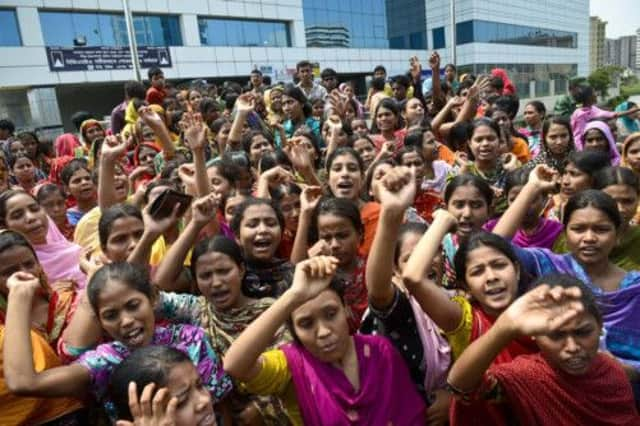Bangladesh factory disaster death toll hits 610


Police said the death toll had reached 610 and more than 200 bodies have been recovered since Wednesday, when authorities said only 149 people had been listed as missing.
The stench of decomposing bodies remained amid the broken concrete of the eight-storey Rana Plaza building, and it is still unknown how many more victims remain to be recovered.
Advertisement
Hide AdAdvertisement
Hide AdThe disaster is likely to be the worst garment-factory accident ever, and there have been few industrial accidents of any kind with a higher death toll.
An architect whose firm designed the building said yesterday that it had not been designed to handle heavy industrial equipment, let alone the three floors that were later illegally added.
The equipment used by the five garment factories that occupied Rana Plaza included huge generators that were turned on shortly before the building crumbled.
Masood Reza, an architect with Vastukalpa Consultants, said the building was designed in 2004 as a shopping mall and not for any industrial purpose.
“We designed the building to have three storeys for shops and another two for offices. I don’t know how the additional floors were added and how factories were allowed on the top floors,” Mr Reza said.
Government officials say substandard building materials, combined with the vibration of the heavy machines used by the factories, led to the collapse.
The building developed cracks a day before the collapse and the owner, Mohammed Sohel Rana, called engineer Abdur Razzak Khan to inspect it.
Khan appeared on television that night and said he told Rana the building should be evacuated. Police also issued an evacuation order, but witnesses say that hours before the collapse, Rana told people that the building was safe and garment factory managers told their workers to go inside.
Advertisement
Hide AdAdvertisement
Hide AdRana has been arrested and is expected to be charged with negligence, illegal construction and forcing workers to join work, crimes punishable by a maximum of seven years in jail.
Khan was arrested as well. Police said he worked as a consultant to Rana when the three illegal floors were added.
The government promised to make the garment industry safer after the November garment factory fire that killed 112 people, saying it would inspect factories for safety and pull the licences of those that failed. That plan has yet to be implemented.
Bangladesh’s £13 billion garment industry supplies retailers around the world and accounts for about 80 per cent of the impoverished country’s exports.
The collapse has raised strong doubts about retailers’ claims that they could ensure worker safety through self-regulation.
Bangladesh is popular as a source of clothing largely because of its cheap labour. The minimum wage for a garment worker is £24.40 a month, after being nearly doubled this year following protests by workers.
The European Union has said it could restrict Bangladesh’s access to its crucial market if it fails to ensure that basic labour standards are enforced.
“We are going to make it very clear to the Bangladeshi government that they have to take immediate action with a precise timeline,” EU trade commissioner Karel de Gucht said. Otherwise, he said, the EU will conduct an investigation that could lead to trade restrictions. “Not because we want to hurt Bangladesh, but because what is happening is simply not acceptable,” he said. “From a humane point of view, we cannot afford that and we have to do something about it.”